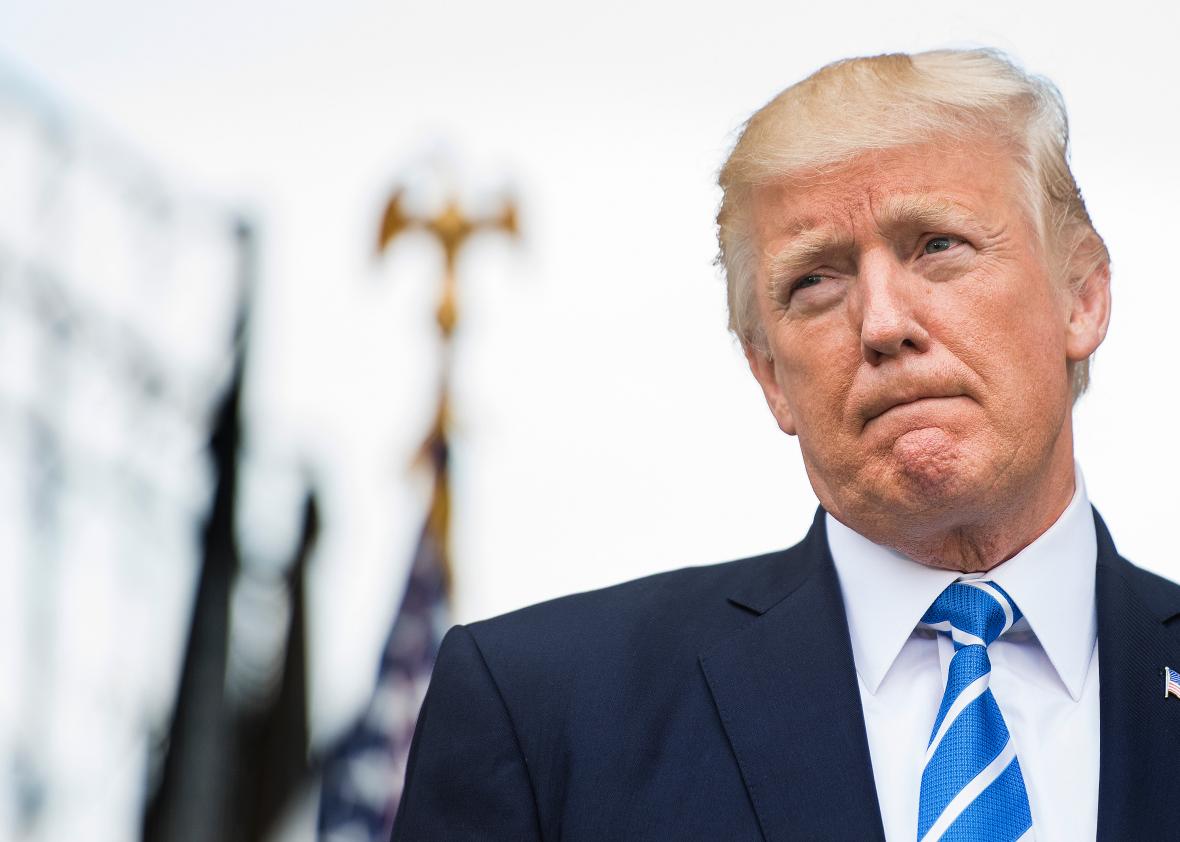Trump Tells Guam Governor Threats From North Korea Will Mean Big Boost to Tourism

AFP/Getty Images
President Trump called Guam Gov. Eddie Calvo to express his support to the U.S. territory amid the threats of an imminent strike from North Korea. But the commander in chief told him not to worry because the threat of a nuclear attack would only help Guam woo tourists. Although the White House statement on the call was notoriously lacking in detail, the Republican governor posted a video of his end of the call, providing a unique glimpse in how Trump talks to other leaders.
“I just wanted to pay my respects, and we are with you 1,000 percent. You are safe,” Trump told Calvo at the beginning of the three-minute call. Calvo didn’t hesitate to express his support as well. “Mr. president, as the governor of Guam, representing the people of Guam, and as an American citizen, I have never felt more safe or so confident, with you at the helm,” he said. “So with all the criticism going on over there, from a guy that’s being targeted, we need a president like you, so I’m just so thankful, and I’m glad you’re holding the helm, sir.”
Trump then went on to do what he does best—praise himself. “They should have had me eight years ago, or at least somebody with my thought process,” he said. “Frankly, you could have said that about the last three presidents.” Without any prompting, the commander in chief then told the Guam governor not to worry about the threats issued by North Korea because it was publicity. And Trump seems to believe there’s no such thing as bad publicity.
“Eddie, I have to tell you, you’ve become extremely famous. All over the world the world, they’re talking about Guam, and they’re talking about you, and I think—tourism, I can say this, your tourism, you’re going to go up like tenfold with the expenditure of no money, so I congratulate you,” Trump said. “It just looks like a beautiful place.”
Calvo then spoke well about the place he governs, calling it “paradise” and told the president not to worry about the island’s tourism industry. “We’ve got 95 percent occupancy, and after all this stuff calms down, we’re going to have 110 percent occupancy,” the governor said, seemingly sharing the same penchant for exaggeration as the president. Trump liked the way Calvo talked: “You seem like a hell of guy.”
Margaret Metcalfe, who runs Calvo’s Washington office, seemed to slightly disagree with the presidential assessment, telling the Washington Post that “none of this is good publicity.” Still, she emphasized that “tourists are coming as normal.” So far at least, it seems few tourists have canceled their vacations and the Guam Chamber of Commerce said earlier this week that “it is business as usual.”
Some in Guam weren’t too happy about the way the two leaders casually discussed the island’s future. “Listening to that call left me feeling disgusted,” Andrea Nicole Grajek, a local artist from Dededo village, told the New York Times. “I was so shocked I was actually crying. They’re leaders discussing a rise in fame and tourism, while the world is watching our island carefully to see if we’ll still be here tomorrow.”
Calvo, however, saw things very differently and released a video message Saturday afternoon saying that it was a relief to know the commander in chief has the island’s back. “This isn’t the first time we have had threats lobbed against our island,” he said. “But this time, knowing we have a president and a White House that is watching out for us, gives me great comfort.”
